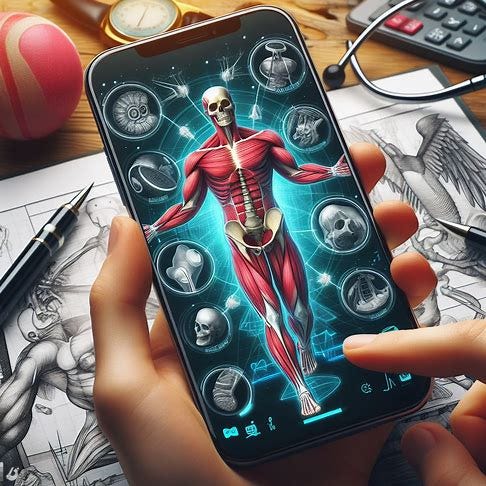What does it mean to deliver “value-based” MSK care? It’s a topic that has garnered a lot of interest along with multiple solutions, opinions, and approaches. As someone on the frontlines whose goal is to practice high quality, evidence-based MSK treatment, achieving a truly integrated approach remains a challenge. As much as we like to talk about high value v. low value treatment, aligned incentives, quality v. quantity, etc., it’s often hard to see the bigger picture and how the various pieces fit together. With that in mind, what follows is a sampling of fictional yet representative case that illustrates the various challenges of delivering value-based MSK care. The goal here is not to place blame of be judgmental, but rather to highlight the problems that need solving if we hope to attain integrated, high quality MSK treatment that does what’s best for patients while delivering quality and accessibility in a cost-effective way. Nothing to it.
Case #1 - Cascading Failure
Patient Mya Neehurtz is a 58-year-old active female who has been experiencing several months of knee pain, worse after she plays Pickle Ball, rides her exercise bike, or participates in Barre classes. When she rests, her pain is tolerable, but Mya’s not ready to give up the activities she loves — activities that are important for both her physical and mental health. Mya makes an appointment with her primary care provider, Dr. I. M. O’ferwelmt. “Dr. O” performs a history and physical and decides to send Mya for an ultrasound to rule out a blood clot (given some leg swelling) and a set of x-rays at the local health system (Dr. O’s practice was acquired by the system several years ago). Imaging orders are placed through the health system’s Heroic EMR software. There are several choices for knee x-rays, and Dr. O isn’t quite sure which is most appropriate. He picks the trauma series.
Mya presents for her imaging tests — facility fee included. The ultrasound doesn’t show a blood clot but does show a Baker’s cyst. X-rays are taken using the protocol ordered by Dr. O: a non-weightbearing trauma series that doesn’t include a dedicated patellofemoral view. The radiologist reads the x-rays as “mild medial joint space narrowing with subchondral sclerosis and small subchondral cysts. A pedunculated bony mass is seen at the medial tibial metaphysis consistent with osteochondroma. Clinical correlation recommended. MRI would be better for evaluating this mass.”
A few days later, Dr. O reviews Mya’s imaging results and is concerned about the presence of a cyst as well as mention of a mass. He orders the MRI as suggested in the radiology report. While the test confirms that the mass is a benign osteochondroma, it shows a host of other findings. Mya’s knee has a popliteal cyst, tricompartmental chondromalacia, a complex tear of the medial meniscus involving the meniscal root, a moderate effusion, reactive bony edema in the medial tibial plateau, and osteochondral loose bodies with a chronic MCL sprain and attenuation of the ACL. After accessing her results through Heroic’s patient portal, Mya is deeply concerned about the litany of findings. Dr. O feels a referral to Orthopedics is in order. He uses Heroic EMR to send a referral to a health system approved MSK specialist. However, the wait is several months, and Mya opts to see an outside Orthopedic Surgeon, Dr. Ivana Kutt, who has earlier availability.
Mya goes to see Dr. Kutt who, unfortunately, can’t access any of Mya’s previously performed imaging studies. Dr. Kutt repeats the knee x-rays, this time getting a set of weightbearing x-rays and a view of the kneecap. These x-rays clearly show moderate knee arthritis with near bone-on-bone changes (unlike the non-weightbearing x-rays taken at the hospital). Mya can bring up the MRI report on her iPhone through Heroic’s app integration with Apple Health, but Dr. Kutt can’t review the images directly — not to mention she’s 5 charts and 90 minutes behind. In a rushed visit, Dr. Kutt dismisses the cyst and osteochondroma as non-concerning but doesn’t really explain why or address Mya’s questions directly. She offers Mya a knee injection and a prescription for an anti-inflammatory. When Mya asks about physical therapy, Dr. Kutt says it probably won’t help. The plan is for a follow up appointment in a few weeks.
Uncertain about her diagnosis and options after her visit with Dr. Kutt, Mya reaches out to Dr. O’s office. Because she has a history of reflux and takes an antacid, Dr. O recommends against taking the anti-inflammatory. Mya is frustrated by the lack of care coordination and conflicting recommendations. Dr. O orders physical therapy for “leg pain,” and recommends that Mya keep her follow up with Dr. Kutt. Mya goes to physical therapy but finds that the exercises are less strenuous than her normal gym routine. What’s worse, they don’t seem particularly focused on her knee problem. Neither the PT nor the knee injection performed by Dr. Kutt seem to improve her pain, and the knee feels the same by the time her follow up appointment rolls around. Dr. Kutt is again rushed and running behind. She recommends knee arthroscopic knee surgery with a rushed, cursory discussion of surgical risks and expected recovery. Dr. Kutt assures Mya that knee arthroscopy is a minimally invasive procedure with a quick recovery. During surgery, she will “repair” the damaged meniscus, clean up the arthritis, and remove the Baker’s cyst. Thinking she has exhausted all her options, Mya signs up for knee arthroscopy surgery.
Mya undergoes the procedure which Dr. Kutt tells her is “successful.” However, she adds that Mya will eventually need a knee replacement but doesn’t elaborate on when or why. The initial recovery is uneventful, but 6 weeks later, Mya is still experiencing pain and swelling in her knee. Dr. Kutt performs another injection, sends her to physical therapy (this time for “s/p right knee arthroscopy”), and again prescribes an anti-inflammatory (which Mya doesn’t fill based on her previous discussion with Dr. O). Despite continued treatment, Mya’s knee function worsens. Dr. Kutt says there’s nothing more she can do, and refers Mya to her partner, Dr. Arthur Plasti. Dr. Plasti tells Mya that she has bone-on-bone arthritis and needs a knee replacement. Another cursory discussion of risks, benefits, and outcomes is undertaken. Mya barely has time to ask questions and leaves the office apprehensive but resigned to the fact that knee replacement is her only solution now.
A week later, Dr. Plasti’s surgical scheduler contacts Mya who books her surgery at the health system’s Hospital Outpatient Department. The perioperative process seems disjointed, and Mya spends much of her time repeating information and correcting inaccuracies in the disparate EMRs that don’t seem to integrate with one another. She gets conflicting information from Dr. Plasti’s office and the hospital pre-admission testing office regarding her recovery. Mya grows increasingly anxious about her surgery. While she had planned to go home the day of surgery, she now doesn’t feel confident in her ability to leave the same day. She speaks to someone in Dr. Plasti’s office who reassures her that she can stay overnight if she wants. However, on the day of surgery, she is informed that her insurance won’t cover an overnight stay, and she could end up with a large out-of-pocket payment. She leaves the same day with a generic sheet of instructions and a referral to outpatient physical therapy that won’t start for 2 weeks.
Mya has her knee replacement surgery and is discouraged by how much more difficult the recovery is than what she expected. She has a hard time getting through to Dr. Plasti’s office and instead contacts Dr. O over concern about pain and swelling in the knee. Dr. O’s office recommends that she go to the ER to be evaluated for a blood clot and possible infection. Although her ultrasound is negative for a blood clot, Mya is admitted to the hospital medical service for “cellulitis.” She gets a couple of doses of IV antibiotics and is discharged on oral pills a few days later. Dr. Plasti is not aware of her admission or difficult recovery, but the pain and redness improve by the time of her first follow up visit.
Although she eventually heals and Dr. Plasti assures her everything looks fine, Mya is never able to return to the activities she enjoys. Her knee feels stiff and unnatural, and she wonders if she would have decided to have replacement surgery knowing what she knows now. She seeks a second, then a third opinion about her knee. There is some mention of more surgery, but the details are vague, and she doesn’t have a clear sense of what might be wrong with her knee. Ultimately, Mya chooses to accept her limitations and leave the knee as it is.
Learning Points:
This case illustrates several shortcomings of the existing system when it comes to providing value-based, high quality MSK care. Demonstrated here are common traditional system challenges including:
Lack of Integration/Interoperability
Low value care
Lack of Engagement/Education/Shared decision making
This case may seem to be cherry-picked and specifically structured to prove a point, not to be representative of how really healthcare works. I can assure you, that isn’t the case. This exact scenario plays out a lot more frequently than we’d probably like to admit. The reasons for this are myriad. Not all of them are as sinister or self-serving as one might think, but some are. In many ways, these failures are driven by multiple issues that compound on one another — a concept otherwise known as cascading failure. So how might this scenario play out differently in a more idealistic, forward-thinking system? Allow me to indulge in some fantasy.
Case #1 - Cascading Failure Re-Visited
It’s a fun mental exercise (well, for me at least) to imagine how this case might unfold in a next generation care model I like to call MSK 2.0. There is a litany of multiverses in which this episode of care could unfold differently. Some are more plausible and more immediately attainable than others. For argument’s (and hopefully discussion’s) sake, what follows is an alternative version of the case set in an idyllic healthcare ecosystem that features thoughtful implementation of technology, better care integration, a focus on the doctor-patient relationship, and the goal of using evolved processes and a focus on quality to drive value.
Patient Mya Neehurtz is a 58-year-old active female who has been experiencing several months of right knee pain, worse after she plays Pickle Ball, rides her exercise bike, and participates in Barre classes. Mya uses the patient portal of her primary care doctor, Dr. Al Ternative, to enter her symptoms.
Dr. Ternative is part of a novel practice model called MedicalOne that incorporates hybrid multi-specialty care with distributed micro-health campuses. MedicalOne’s unique value-based model blends high quality, transparent care with thoughtfully implemented technology and a significant focus on the doctor-patient relationship, patient engagement, and access. Their patient portal is easy to access on a computer, phone, or tablet and includes a user-friendly design that allows Mya to easily enter her symptoms. Through an AI/LLM-powered voice recognition software, she can even interact with a chatbot (DrGPT) to answer some questions using natural language. Of course, Mya is aware she’s interacting with a chatbot and not a real human. This fact is made clear at the beginning of the interaction, and Mya understands that she can request an appointment or to talk to a clinician at any point. Dr. Ternative’s office has done a fantastic job educating Mya, and she feels comfortable using the AI chatbot. MedicalOne is completely transparent about how her data is being collected and used with robust privacy protections in place. Confident that her PHI is safe, Mya enjoys the convenience of a quick and low-friction interaction.
Based on the session, DrGPT determines that knee arthritis is Mya’s mostly like diagnosis while offering a short list of other potential causes. A selection of educational materials is offered including videos, interactive virtual booklets, and even access to a support group of patients with similar diagnoses. Several conservative treatment options are suggested including self-directed virtual PT exercises, activity modification, and ice/heat. Mya has access to an online store offering approved braces, topical pain relievers, ice machines, etc. (all preselected to be covered by Mya’s health plan and HSA). Because DrGPT is linked to Dr. Ternative’s integrated EMR (Iconic), it has access to Mya’s medical history. Determining that there are no contra-indications, DrGPT suggests NSAID therapy and offers a short course of a low-cost generic medication that can be delivered that afternoon. Before opting to try the medication, Mya explores side effects and asks DrGPT questions about the pros and cons of NSAID use. She opts to try the medication, and a request is automatically sent to Dr. Ternative’s team to approve. A reflexive reminder is set in Iconic EMR to check Mya’s kidney and liver function if she is still re-filling the medication after three months. Finally, Mya is given the option to make an in-office appointment but decides to try DrGPT’s suggestions first.
Mya is transitioned to the MSK instance of MedicalOne’s RPM/RTM platform, called MOtion, where she can access PT sessions, log pain scores, monitor her activity levels, and contact a medical provider if necessary. Data collected in MOtion synchronizes seamlessly with Iconic EMR, but only surfaces alerts to Dr. Ternative’s team when necessary (as determined by an AI/ML algorithm based on evidence-based practices with robust input from medical specialists). Over the course of a few weeks, MOtion recognizes that Mya is walking less, her pain scores are going up, and she’s not exercising as frequently. At one point, she asked DrGPT about heart burn symptoms. An alert is sent to Dr. Ternative — Mya doesn’t appear to be responding to treatment and may be experiencing side effects from the prescribed NSAID. Dr. T’s team starts to reach out to Mya but discovers that she’s already made an appointment through MOtion. DrGPT made sure Mya was taking the NSAID appropriately and, based on her responses, suggested she discontinue the medication until being seen.
A few days before her knee pain appointment, Mya is sent a reminder and offered the ability to complete a pre-visit process meant to make her experience smooth, efficient, and informative. She logs into Iconic EMR and finds that all her information has been pre-populated including her recent knee history and her detailed past medical history from a recent PCP visit. She merely must confirm the information and add anything relevant updates — again using a natural language, conversational LLM that is pleasant and easy to use. Mya completes the pre-visit process in less than 5 minutes. Iconic transparently informs her that, as a member of MedicalOne’s revolutionary health insurance plan, her knee pain treatment is covered under an MSK-condition specific sub-capitation model that aligns (and rewards) her medical team. Her in-person visit will be with a MedicalOne MSK specialist, who through an AI-driven matching process, is most qualified to treat her problem. Mya can view the specialist’s profile and credentials and select a different specialist if she finds a better fit.
On the day of her visit, Mya presents to the MedicalOne micro-campus. Since she completed the pre-visit ahead of time, she can simply check-in at a kiosk, review and update her information (if necessary) and enjoy a comfortable waiting area that’s not brimming with frustrated patients (and staff). She doesn’t have to wait long.
MSK specialist, Dr. Rhea Laxed, almost always runs on time. Her clinic has been specifically designed to optimize patient flow while emphasizing the doctor-patient interaction. Because MedicalOne follows a novel model that rewards and incentivizes high quality, coordinated care, Dr. Laxed isn’t pressured to make more widgets (cramming her surgical and office schedule full to cover overhead costs and satisfy revenue metrics). Sure, she could make more money in a pure FFS model, but her compensation is competitive, and she experiences a level of autonomy and sense of purpose many of her colleagues only dream about. She has figurative and literal ownership (MedicalOne MSO stock) and experiences benefits such as profit-sharing, paid vacation, educational debt repayment and protected time to pursue leadership roles and intrapreneurship. Dr. Laxed finds the organization’s leadership approach streamlined, transparent, and responsive with a flat structure and plenty of opportunities for clinician-administrator collaboration. She hosts monthly outreach clinics for underserved populations — something MedicalOne not only allows but encourages.
Dr. Laxed sees the same number of patients per clinic that she saw in her traditional practice. But MedicalOne’s thoughtfully implemented technology allows her to spend significantly more time with patients and significantly less time documenting and performing non-clinical tasks. Iconic EMR’s AI-powered Virtual Medical Assistant, Marvin, gives Rhea a Generative AI-driven, concise, conversational audiovisual presentation of Mya’s case, and Dr. Laxed can easily ask questions to obtain more information. By the time she goes to see Mya, Dr. Laxed has a good sense of what’s going on and feels prepared to have a high-yield, focused visit. Meanwhile, in the exam room, Mya has just viewed a similar presentation and confirmed its accuracy.
Dr. Laxed enters the room, sits down, and introduces herself. She briefly summarizes Mya’s history and symptoms and performs a thorough physical exam. A set of x-rays is recommended as the next diagnostic step. Iconic EMR’s ambient voice recognition technology has already queued the x-ray order (weightbearing films per internally developed and validated guidelines), and an intelligent lighting system guides Mya to the Radiology Suite. Dr. Laxed goes to see her next patient and is alerted when Mya’s x-rays are complete and she’s back in the exam room.
Dr. Laxed brings Mya’s x-rays up on the large video screen in the exam room and go over the findings with her. Mya has moderate knee arthritis and a benign osteochondroma. Dr. Laxed takes as much time as necessary to explain the natural history of knee arthritis and spectrum of treatment options (including risks and benefits) with Mya. She points out the osteochondroma and reassures Mya that this is a benign finding that does not require further work up. Iconic EMR alerted Dr. Laxed that Mya experienced heart burn with the previously prescribed NSAID; therefore, she suggests one that may be easier on Mya’s stomach.
Mya asks if an MRI of her knee is necessary, but Dr. Laxed explains that this is considered a low-yield test when x-rays reveal arthritis. Initially skeptical, Mya appreciates the time Dr. Laxed spends and, after watching a short educational video on knee arthritis and osteochondromas in the exam room, feels more engaged and ready to take an active role in managing her condition. With help from Iconic EMR’s clinical decision-making support tool— which takes into account both evidence-based practices and patient-specific psychosocial factors — Mya and Dr. Laxed come to the shared decision to try a cortisone injection next. Mya understands that her best long-term option for pain relief and return to function may eventually be knee replacement surgery. But, based on her history and current level of function, her personalized recommendation is to continue non-surgical treatment to avoid dissatisfaction following surgery. The cortisone injection is completed, and the visit concludes. A visit summary along with access to her x-rays and educational materials is immediately accessible on Mya’s phone through Iconic’s mobile app. MOtion’s post-injection protocol is activated. Dr. Laxed reviews and signs off on Iconic’s AI-generated office note as well as auto-generated diagnosis codes and billing charges. She completes the process in 5 minutes and gets ready to see her next patient.
Mya continues to log her symptoms and response to the injection through MOtion. She receives asynchronous messaging from Dr. Laxed regarding what to expect and, therefore, isn’t concerned when her knee feels a little worse the following day. Over the next few weeks, Mya’s pain scores decline, and her function improves. A virtual check-in through the MOtion app offers the option for an in-office follow up, by Mya is happy with her improvement and decides this isn’t necessary. For several months, her knee symptoms remain manageable, and she occasionally consults the MOtion app for advice.
A year later, Mya’s symptoms have worsened. She stopped using the MOtion app and doesn’t feel that repeating the same process as the previous year is likely to be effective. She decides to make an appointment to see Dr. Laxed and again completes the pre-visit process including a current summary of her knee symptoms. Mya is pleased to see that her medical history has automatically updated with information from a visit earlier in the year with her MedicalOne primary care provider. During that visit, Mya was diagnosed with new onset atrial fibrillation and started on a blood thinner. Her HgbA1c was found to be elevated at 8.5, and she was started on Metformin. There’s no need to manually update her history, and Mya feels a sense of relief that Dr. Laxed has access to this information.
After discussion with Dr. Laxed, Mya is felt to be a good candidate for knee replacement surgery. Based on her current clinical picture, the clinical decision support tool indicates a high chance of a good to excellent outcome based on Mya’s current limitations and long-term expectations. Mya again has an informative visit with Dr. Laxed. She watches an interactive educational video on knee replacement surgery using an immersive virtual reality headset. As soon as her surgery is booked in Iconic EMR, Mya is enrolled in MedicalOne’s award-winning Joint Replacement Center of Excellence Program. She is assigned a care navigation nurse who will coordinate the perioperative process and gains access to MOtion’s Knee Replacement module.
Because MedicalOne is a well-integrated multi-specialty clinic, Mya’s care is seamlessly coordinated. Iconic’s preoperative algorithm risk-stratifies Mya based on her (accurate and current) medical information and determines she would benefit from medical optimization prior to surgery. Specifically, it’s recommended that Mya can reduce her surgical risk by lowering her HgbA1c. An appointment is made with her primary care provider (who is aware that Mya is scheduled for knee replacement). Similarly, Mya’s cardiologist is automatically alerted that Mya has been scheduled for surgery. He reviews her case and makes recommendations regarding her blood thinner. No further cardiac workup is necessary, and the cardiologist’s recommendations are seamlessly added to Mya’s Knee Replacement Episode of Care Plan in Iconic EMR. Here, information is collected, sorted, and synthesized as it arrives including lab tests, completed educational materials, and preoperative exercises. When Mya has been optimized for surgery and complete the necessary steps, her Care Plan flips from yellow (“Caution”) to green (“Ready for Surgery”). A knee replacement booking form is released to Iconic’s Surgical Scheduling Assistant which finds time on Dr. Laxed’s schedule and suggests, based on Mya’s medical data and optimized health, that she is an appropriate candidate for outpatient knee replacement in MedicalOne’s state-of-the art, high quality, cost-efficient Ambulatory Surgical Center.
With support from her care navigator, medical team, and MOtion’s perioperative RTM/RPM capabilities, Mya is confident in her ability to recover from knee replacement. Though she is naturally apprehensive about surgery, the constant “touches” and well-coordinated effort put her at ease. She knows that knee replacement recovery can be challenging but feels well prepared for what to expect and is experiencing a high level of patient activation.
While this scenario seems like a pipedream, I believe it is achievable. We’re already blowing billions on healthcare innovation with questionable impact — why not spend a few million and try to build this?












Great article addressing the current reality and an alternative reality on the I'd like to have wish list.